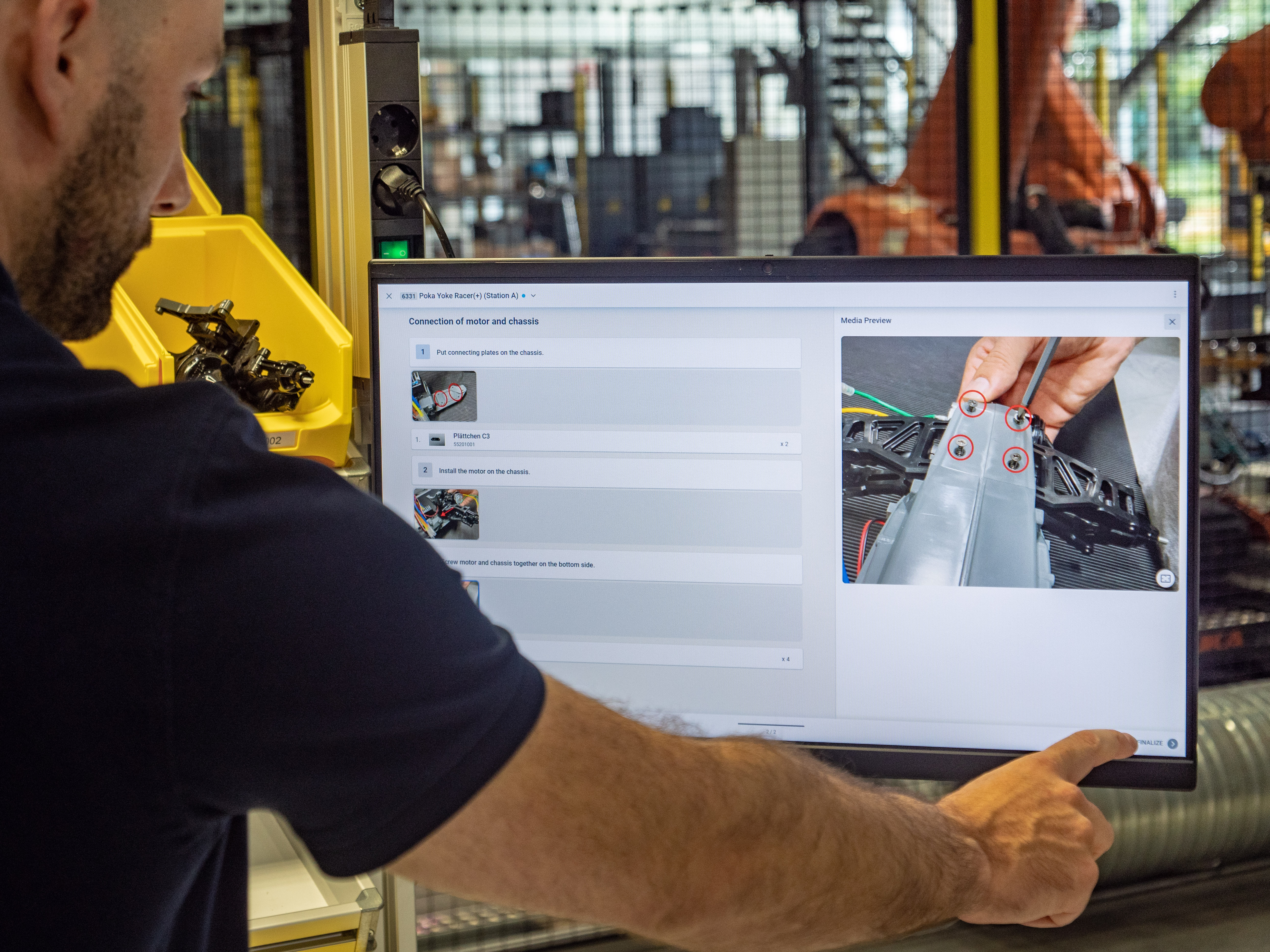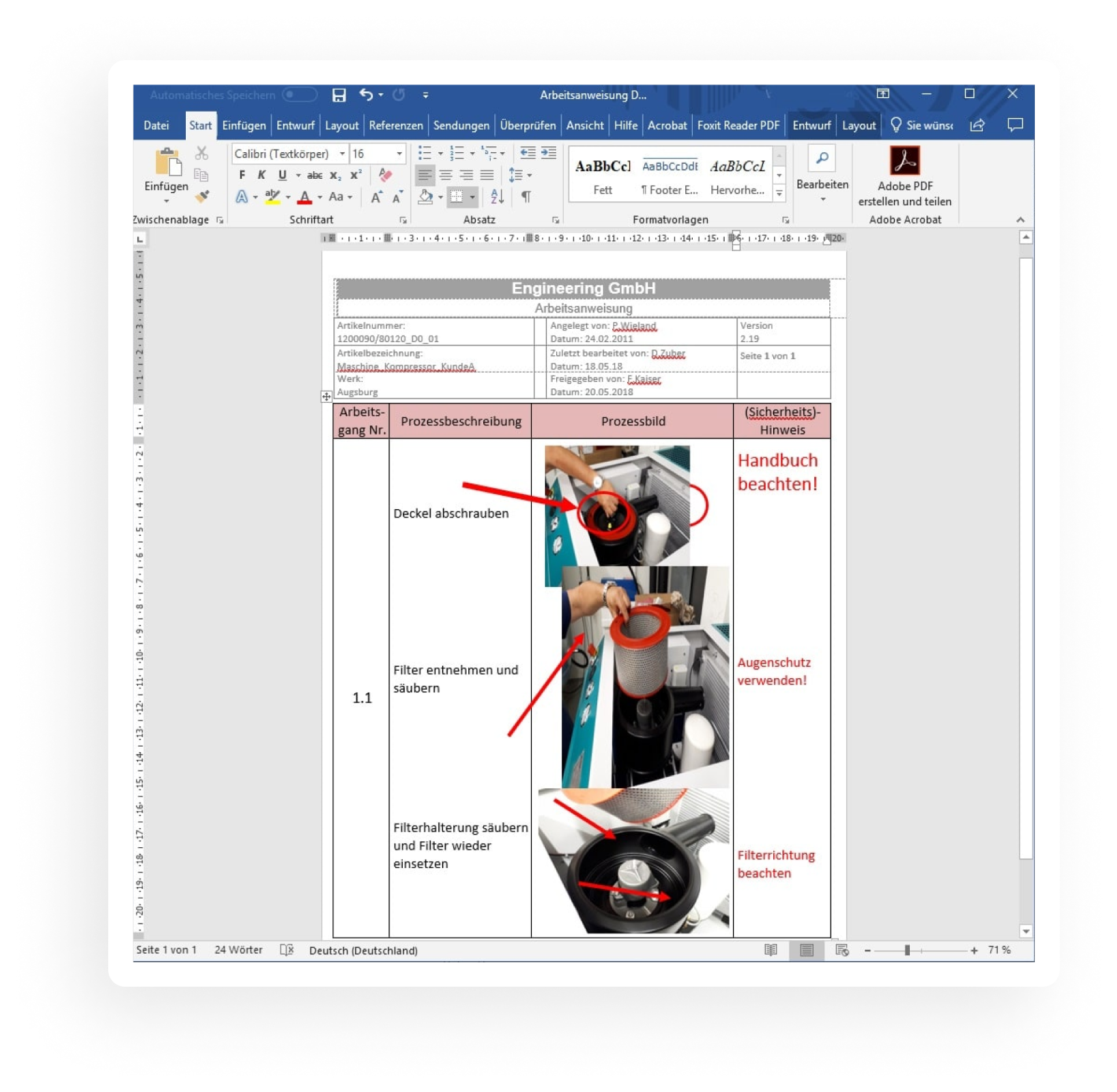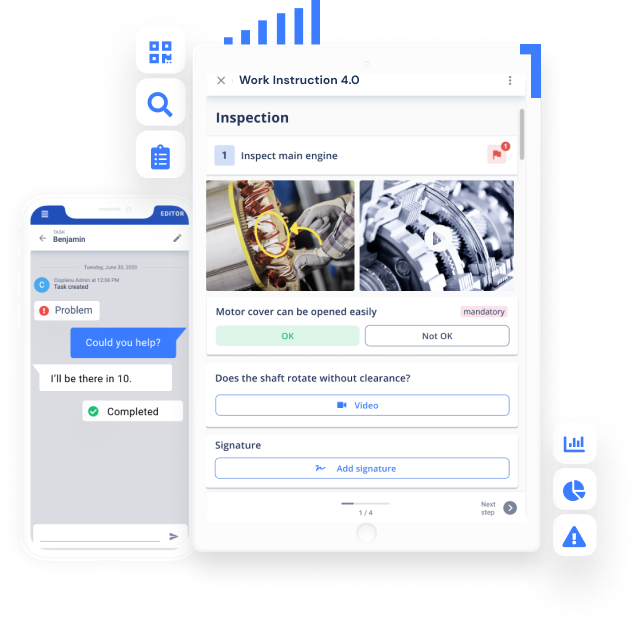Create digital Work Instructions with AI-powered Software
With digital work instructions for manufacturing, you simplify any operational procedure through an intuitive interface for your employees, real-time collaboration and comprehensive analytics. This way, you know the progress of your operational procedures at any time, solve incidents collaboratively and use your findings to improve processes.
We would be happy to show you the functionalities of the software in a 30 to 60 minute live demo. Simply submit a request for this via the form. The Operations1 team is looking forward to talking to you!

- -60% Effort for creation and updates
- +21% Productivity increase
- -55% Reduction of error rates
No more Word, Excel or PowerPoint for your work instructions
The picture shows an example of a visual work instruction created with a classic word processing program. Many companies know that using word processing programs is time-consuming and difficult to maintain. Changes, translations and the subsequent release of the work instructions are also very time-consuming. The printed paper instructions often end up in confusing stacks of paper or bulky folders.

Digital work instructions solution for industry leaders
Paperless smart work instructions can be created, updated and released digitally simply via drag & drop. Thanks to the cloud approach, your manufacturing employees always receive the current version of your digital work instruction on the mobile device of their choice. To do this, they simply call up the instruction via an integrated search function, scan of a QR code or via order. All data points relevant for the smart work instruction as well as information on operational progress can be evaluated in a central overview. This ensures that all work is carried out, incidents are resolved and data is collected.

See how you can create digital work instructions with Operations1
Get to know the software in just 7 minutes
Get an overview of the functionalities and application areas of Operations1.

Functionalities of the leading visual work instruction software
Drag and drop
Simplify the creation and updating of your work instruction
Images and videos
Include images and videos in your documents to increase comprehension
Media editor
Increase comprehensibility by easily editing images and videos in Operations1
Change notifications
Inform your staff when a work instruction changes and always use a point of truth
Multi-language
Deliver digital instructions in all the world's major languages
Modular structure
Create recurring elements as modules and create a point of truth
QR-code scanning
Start processes via search function or by scanning a QR code
Connection
Synchronize production orders with your MES or ERP system
IoT integration
Use IoT tools and report values error-free and automatically into your instruction
Let's put an end to paper-based work instructions.
Why You Need Digital Work Instructions Software
In times of a shortage of skilled workers, small batch sizes and an increasing number of product variants, precise work instructions are key to produce efficiently with a stable, high quality. With digital work instructions you can ensure that process knowledge remains in your company and can be further refined based on local feedback, gathered process data and easy change implementation via drag and drop.
Interested? Get to know Operations1 in a live demo
We would be happy to show you the functions of Operations1 in an individual live demo and answer your questions.